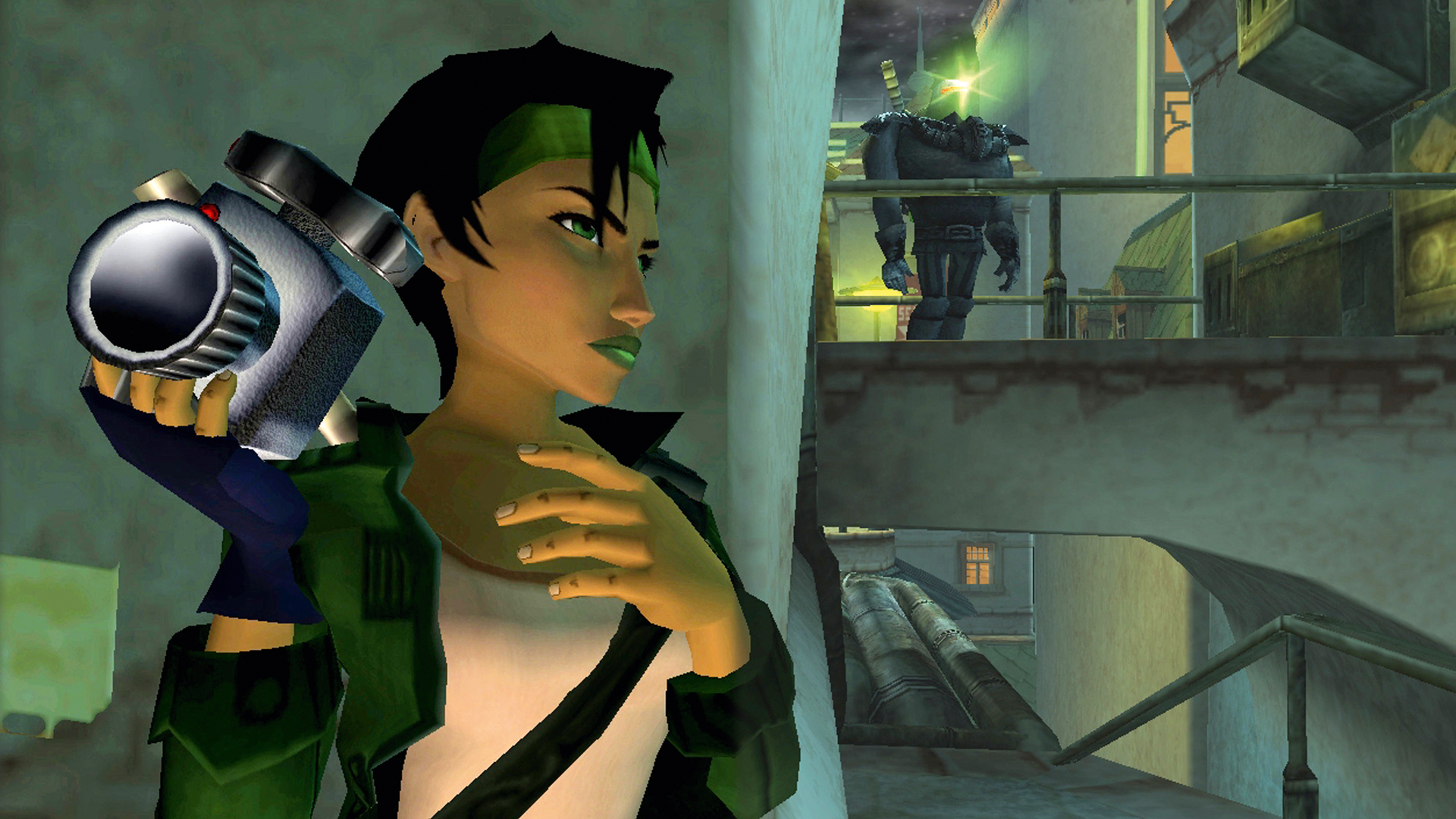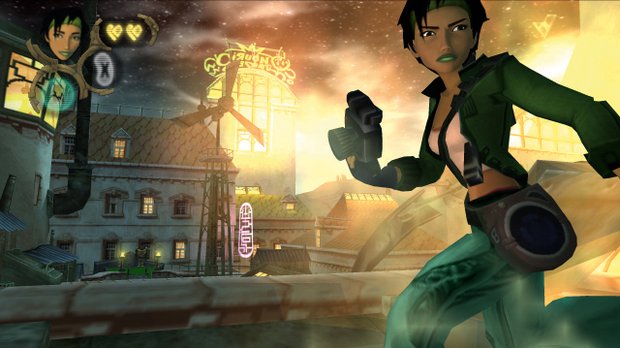Jade's camera in Beyond Good and Evil is more powerful than any weapon
While the mere mention of Beyond Good & Evil is enough to make some fans teary-eyed, it won’t be memories of the game’s searing mechanical innovation getting them emotional. After all, Michel Ancel’s beloved action-adventure can seem conservative once you pick it apart. Its structure is borrowed from Zelda, for instance, while its stealth sections reuse plenty of ideas from Metal Gear Solid before Ubisoft’s Montpelier studio then adds some wonky implementation of its own. Melee combat is standard thirdperson fare enhanced with the odd backflip, while its central premise is echoed in dozens of shooters.

So what marks this game out? Well, it’s the quirky cast of characters, including an inventor pig and a rulebook-quoting secret agent. It’s the watery, European loveliness of Hillys, its overcast skies and gently rounded architecture painted in warm tones. It’s Jade, BG&E’s protagonist, living in a lighthouse full of stained glass windows and orphan children. And, perhaps most importantly, it’s the fact that she views this strange world and all of its careworn inhabitants through the lens of a camera, rather than the scope of an assault rifle.
It’s rare that such a simple design quirk can do so much to change the feel of a game, but it’s also hard to believe that we’d all still be talking about how different it feels if BG&E had been based on gunplay. Luckily, when the alien DomZ and their proxies in the Alpha Section threaten Jade’s mining planet, she picks up her camera – not a pistol and a pocketful of ammo – and joins the resistance, ready to expose the regime rather than merely thin its ranks. What follows is a familiar muddle of combat, puzzling, and bosses, but it doesn’t necessarily feel familiar any more. In fact, it often seems cerebral, sophisticated and faintly left-wing. Your actions and objectives are always justified, and the limited extent of your abilities is almost realistic at times. With that camera and little but melee skills to protect you if things go wrong, for once you can really believe you’re one of the good guys.
So while you’re still sneaking into factories and mysterious warehouses, you’re there looking for evidence of corruption, rather than rooting out metal MacGuffins to slap explosive charges on. Meanwhile, your warm-blooded targets aren’t walking around ready to be sniped from a safe distance, but lurking in the darkness waiting to be snapped. Although that essentially comes down to the same mechanic, it leaves you feeling furtive, heroic and exhilarated. It’s a far cry from the dehumanising distanced headshots of Modern Warfare’s Pripyat. And when you make your way back to the streets of Hillys, you can see the fruits of your work as your photographic scoops start to turn the sleepy tide of public opinion. The camera’s much more than a rifle stand-in. It makes a connection to the gameworld that goes far beyond simply allowing you to kill the things in it. When it isn’t helping you complete missions or performing fancy sci-fi busywork, such as picking out constellations, it’s a device that encourages you to closely examine the environment Ubisoft’s created, as well as the characters with which the studio has populated its setting.

Early on in the adventure, Jade’s contacted by a Hillyan science centre looking for somebody to photograph all of the planet’s dwindling animal life. It’s a clever means of paying for upgraded kit, such as digital zooms, and it also threads a handful of side objectives into most of the game’s levels. This means you’ll inch through dungeons with one eye on the patrolling guards, and another on promising cracks in the walls. On top of that, your secondary mission is also tartly thematic: BG&E gives you tools to help you preserve its environment – even if it’s only as a photographic record – rather than those to slowly destroy it. Hunting for Hillys’ critters even encourages good habits that any real-world photographer would recognise, ensuring that you get used to having your camera ready, practise lining up shots, try out compositions and learn to snap what looks good to you.
In this respect, a surprising amount of the game might be quietly built around Jade’s greatest weapon. Hillys’ creamy skybox looks great in contrast to the slippery black rocks of the planet’s mountains, for example, while indoor vents puff artful little jets of steam, and even anti-personnel mines have a certain aesthetic charm. Get a companion in the frame and they’ll stiffen with nerves or pose, while everywhere you look there are teapots, clumps of ferns, and even battered old crates itching to be photographed just for the pleasure of getting a nice shot. Through the eyepiece of Jade’s camera, you’ll come to view BG&E’s various creations with an intensity of focus many other games simply can’t engender.
Does photography define Ubisoft’s cult classic, then? Mechanically, it’s hard to argue that it does, given your ability to store personal snapshots is limited, and in most missions your camera could be taken out and replaced with a gun, a tricorder, or even Link’s catapult. A few quick tweaks could drop you back into a world of headshots and hacking with little noticeable change in pace. In other ways, though, Jade’s shutterbug tendencies are totally transformative, encouraging you to capture the world as it is, instead of shredding it for cover or tactical advantage. Go to Hillys and you’ll get to know the place. And for once you’ll have the pictures to prove it.
Sign up to the GamesRadar+ Newsletter
Weekly digests, tales from the communities you love, and more
Read more from Edge here. Or take advantage of our subscription offers for print and digital editions.
Edge magazine was launched in 1993 with a mission to dig deep into the inner workings of the international videogame industry, quickly building a reputation for next-level analysis, features, interviews and reviews that holds fast nearly 30 years on.



